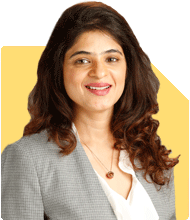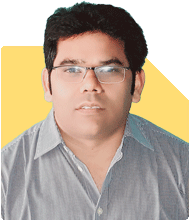How to Invest for My Future: 34 Year Old with Family & 3 Lakh Monthly Investment
Milind Vadjikar |1232 Answers |Ask -Follow
Insurance, Stocks, MF, PF Expert - Answered on Sep 14, 2024
He has a mechanical engineering degree from Government Engineering College, Sambhajinagar, and an MBA in international business from the Symbiosis Institute of Business Management, Pune.
With over 16 years of experience in stock investments, and over six year experience in investment guidance and support, he believes that balanced asset allocation and goal-focused disciplined investing is the key to achieving investor goals.... more

I am going to turn 34 years old this year. Me and my wife earn 3.7 Lakh Per Month In Hand (Post all deductions: Tax, EPF), above included salary and rental. 3 Lakh per month i can invest. How do you suggest i should invest for achieving my goals. In my family i have my Wife, Son 4 YO and my parents. Live with my parents in my own house so i do not plan to buy house. My wife and my own current savings: - 80 lakhs in Equity (PMS and Mutual Funds). - 45 Lakh in Crypto Currency (Invested 5 lakh very early and i want to stay invested). - Commercial Real Estate Office Worth 1 Cr. yielding rental of 47 thousand per month. - 15 Lakh Provident Fund - 20 Lakh Bank FD & Arbitrage Fund (Emergency Fund) - 5 Lakh Savings Account (Day today expenses) Expenses: - 70k per Month including everything (Daily expense, Vacation, mobile etc). - Our monthly expense is low as my father is also working and many other expenses (around 50k) are taken care by him only. I have health insurance cover from my company of 6.5 lakh. Personal medical insurance of 10 lakh. Term insurance from my company of around 1.7 crore. Personal Term Insurance of 4 crore. Zero loans. Goals: - 1.5 crore in today's terms 10-12 years later to reconstruct the house. - 40 lakh, 6 years later for new car. - 3-4 crore at age of around 55 (For my personal goal). - 2 crore for my son higher education. - 30 crore for my retirement.
You have adequate term life cover but recommend to cover family and parents with healthcare cover of 50 L as a minimum considering increasing cost of medical treatments and rise in illnesses with age.
Your existing investments are considered as 95 L (Ignoring Emergency fund and saving account balance)
Crypto holdings are considered 0 since they are highly volatile, unregulated and not backed by any tangible asset.
1.5 Cr house reconstruction expenses 12 years hence translates into around 3 Cr considering 6% inflation.
So start a SIP of 90K for 12 years into Nippon India Multicap Fund & HDFC top 100 Fund(50:50)which may yield a corpus of 3.12 Cr(Considering modest return of 13%)
Next goal is car purchase after 6 years so initiate a SIP of 40K in HDFC balanced advantage fund which will yield a corpus of 40L considering modest return of 10.5%
Next goal is a corpus of 3-5 Cr when you will be 55 so you can do a SIP of 50K in PPFAS flexicap fund which will yield a corpus of 5.73 Cr assuming conservative return of 13%
Further important goal is corpus for child education so considering timeframe of 14 years recommend to do a SIP of 50K in HDFC Children's Gift Fund which will yield a corpus of 2Cr+ assuming modest return of 12%
Finally retirement goal of 30Cr assumed to be 25 years from now so you may start a SIP of 70K in ICICI Pru Retirement Fund Pure Equity Plan which yield you a corpus of 15.9 Cr considering modest growth of 13%.
Plus your corpus of 95 L at a modest return of 9.5% will yield a value of 9.18Cr after 25 years
So your total retirement corpus is now 15.9+9.18=25.08 Cr
Further the amount getting released after achievement of all other goals apart from retirement can be redeployed in a value based BAF(HDFC; 10% return) for residual span towards retirement goal.
i.e. 90K for 13 years --2.89 Cr
40K for 19 years--2.73 Cr
50K for 5 years----0.39 Cr
50K for 11 years---1.2 Cr
Total_-----------------------7.21 Cr
Adding this to our earlier calculated retirement corpus gives us comprehensive retirement corpus of 7.21+25.08= 32.21 Cr
Anything you get from Crypto is bonus!!
*Investments in mutual funds are subject to market risks. Please read all scheme related documents carefully before investing
You may follow us on X at @mars_invest for updates
Happy Investing!!
You may like to see similar questions and answers below
Ramalingam Kalirajan |8453 Answers |Ask -Follow
Mutual Funds, Financial Planning Expert - Answered on Jun 23, 2024
Ramalingam Kalirajan |8453 Answers |Ask -Follow
Mutual Funds, Financial Planning Expert - Answered on Jul 04, 2024
Ramalingam Kalirajan |8453 Answers |Ask -Follow
Mutual Funds, Financial Planning Expert - Answered on Jul 12, 2024
Ramalingam Kalirajan |8453 Answers |Ask -Follow
Mutual Funds, Financial Planning Expert - Answered on Jul 12, 2024
Ramalingam Kalirajan |8453 Answers |Ask -Follow
Mutual Funds, Financial Planning Expert - Answered on May 16, 2025
Mihir Tanna |1054 Answers |Ask -Follow
Tax Expert - Answered on May 16, 2025
Ashwini Dasgupta |105 Answers |Ask -Follow
Personality Development Expert, Career Coach - Answered on May 16, 2025
Onkar Singh |27 Answers |Ask -Follow
Career Management, Skills Development Expert - Answered on May 16, 2025
Ramalingam Kalirajan |8453 Answers |Ask -Follow
Mutual Funds, Financial Planning Expert - Answered on May 16, 2025
Nayagam P P |4535 Answers |Ask -Follow
Career Counsellor - Answered on May 16, 2025
Ramalingam Kalirajan |8453 Answers |Ask -Follow
Mutual Funds, Financial Planning Expert - Answered on May 16, 2025
Ramalingam Kalirajan |8453 Answers |Ask -Follow
Mutual Funds, Financial Planning Expert - Answered on May 16, 2025
Nayagam P P |4535 Answers |Ask -Follow
Career Counsellor - Answered on May 16, 2025
Nayagam P P |4535 Answers |Ask -Follow
Career Counsellor - Answered on May 16, 2025












.jpg)












